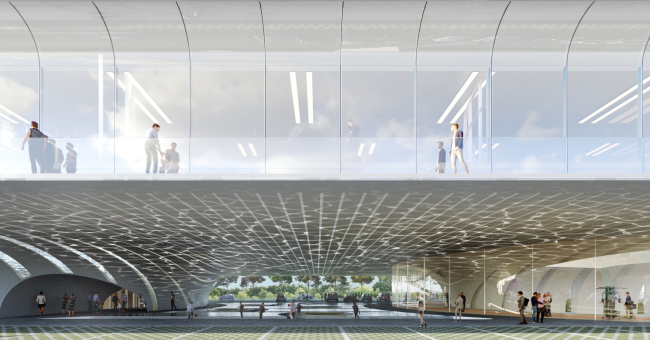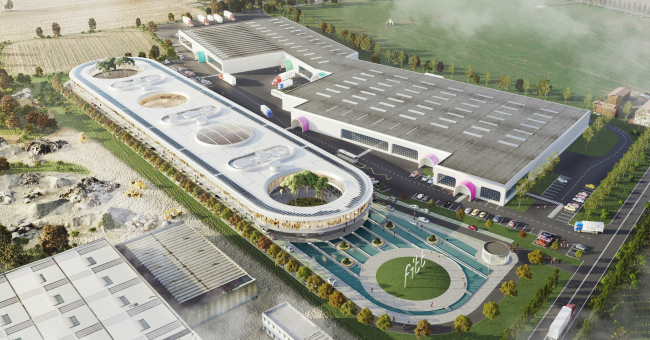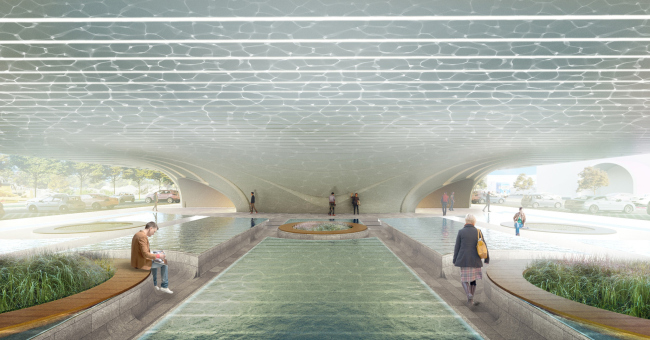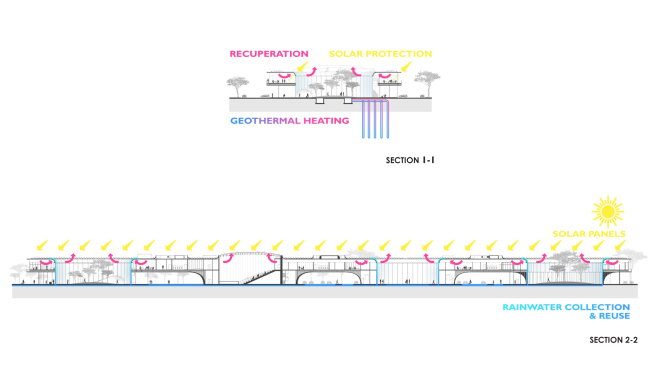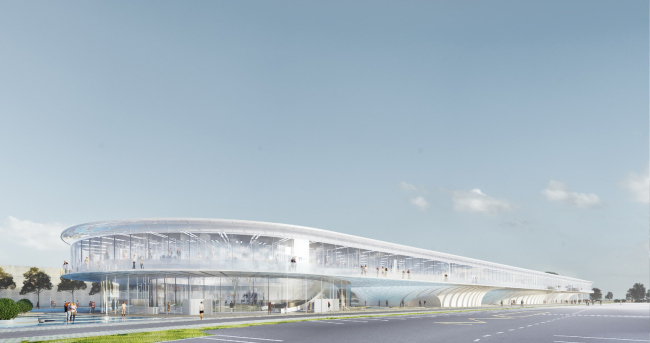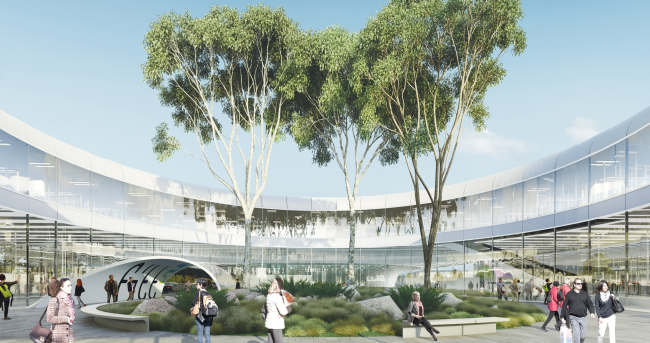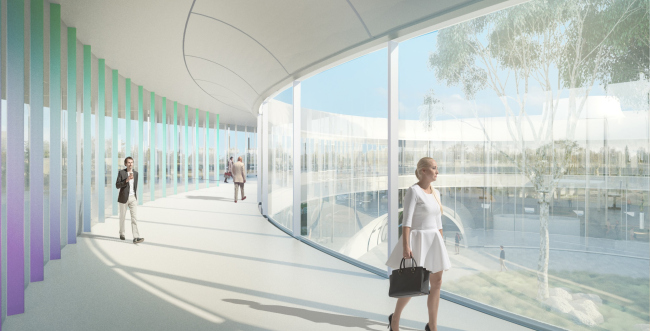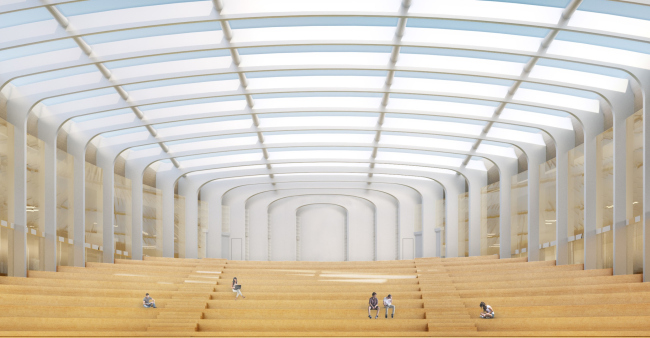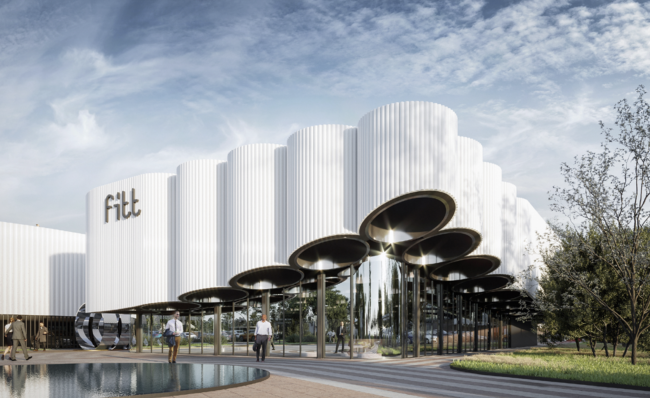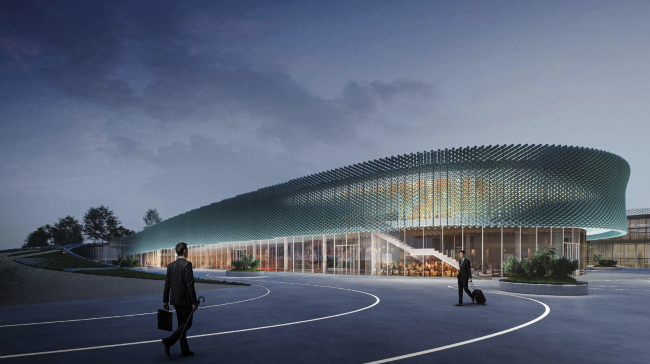|
Published on Archi.ru (https://archi.ru) |
|
| 18.05.2021 | |
|
Headquarters of the Future |
|
|
Polina Sadova, Darya Gorelova |
|
| Studio: | |
| Arena | |
|
The project by “Arena Group”, which won in an open competition of ideas for the headquarters of the Italian company FITT, combines futuristic forms, an interesting set of functions, energy efficiency, and subtle references to the archetypes of Italian architecture. Particularly beautiful is the “continuous” fountain. In this issue, we are sharing about the three winners of the competition. The competition was announced in November last year by the YAC (Young Architects Competitions) project in collaboration with FITT Group, a large company with a 50-year history that develops and implements innovative technologies for household, professional, and industrial-scale pipelines. Architectural students and practicing architects under 35 were invited to participate. FITT headquartersCopyright: © ARENAThe authors of the winning project offered a rounded form that at the same time has multiple meanings: it is based on five aligned circles with a similar, yet varying, diameter, united by a common elongated contour with rounded corners at the ends. When you look at it from above, it looks like some technical appliance, magnified manifold – for example, for grouping pipes, which are in fact produced by FITT – thus, the building becomes an icon, a sign, based on the interpretation of the production process. At the same time, its outline also reminds the plan of a Roman racecourse; in mathematics, this form is indeed called a stadium. When put together, this gives a union of modern technology and Roman (or Italian) classics: the former points to the specialization of the company, the latter to its location. Both allusions, it must be noted, are far from literal. FITT headquartersCopyright: © ARENAOne must say that Roman associations don’t end on the “racecourse” contour: first, according to the architects’ proposal, the whole bottom floor of the headquarters building is open to pedestrians, and, second, it is filled with shallow pools, elevated in stone frames. The water mirrors alternate with lawns and benches, and this “water-and-pedestrian” structure also spills outdoors, framing the main square in front of the grand entrance. A curious solution: let’s imagine that when you pass through this place you will be able to touch water and grass, which is more than relevant in the hot Italian climate. The flecks of light from the water reflect on the walls, where they merge with backlighting strips that initially generate them. FITT headquartersCopyright: © ARENAOne should hardly say that the atmosphere in the first floor must be filled with damp coolness, reminding either of a grotto of a Renaissance park, or a Roman bathhouse. Again, the architects are associating the paths with pipelines, and the abundance of water can be reminiscent not so much of bathhouses and fountains of the classic era, but also of modern spa centers, in which, among other things, the FITT pipes are also used. The result, again, is twice as contextual, and at the same time modern, both in terms of form and from the sustainability standpoint, because the water that evaporates from the surface of the pools is also used for cooling the building. The project utilizes other technologies of passive energy conservation: photovoltaic elements, collection of gray and rain water, natural ventilation, and geothermal technologies. The energy efficiency of the building. FITT headquartersCopyright: © ARENAIn addition to the set of environmentally friendly solutions, the building features a highly futuristic imagery, inspired by the Apple headquarters: a curvilinear panoramic glass, large-span vaults, big cantilevered structures – and all of this glitters, flows, and hovers in a UFO-like fashion. The stained glass windows of the second tier bend in a glittering canopy on the outside contour, while in the inner one, in the yard, they end up in a rounding, because of which the whole shape looks like a vortex, or, again, a pipe with a widening end. FITT headquartersCopyright: © ARENAFITT headquartersCopyright: © ARENAFITT headquartersCopyright: © ARENAThe five circular platforms that constitute the basis of the building’s shape, are connected with five basic functions: the circle on one end became a green plaza with the company’s logo that marks the main entrance, the opposite circle the fitness club and the residential rooms, i.e. the most private area of the complex. The functional diagram. FITT headquartersCopyright: © ARENAThe central circle hosts a roofed “arena” (this name, proposed by the architects, reminds us both about the name of the architectural company and the shape of the building). The Arena – a multifunctional hall with an amphitheater, a center of various events and communication – must work as the meeting point for all of the residents of the headquarters and everyone who will be invited to it. FITT headquartersCopyright: © ARENAFrom the entrance side, the “arena” hall is flanked by expo grounds and conference halls, on the opposite side, there are workspaces and a restaurant. Each zone in the lower tier has its own individual entrance; three circles out of five have open courtyards. All of this, however, is situated on the lower level, while the upper one is fully occupied by a flexible workspace, where rooms for focused work are interspersed with open lounge areas for communication, and transformable meeting rooms. 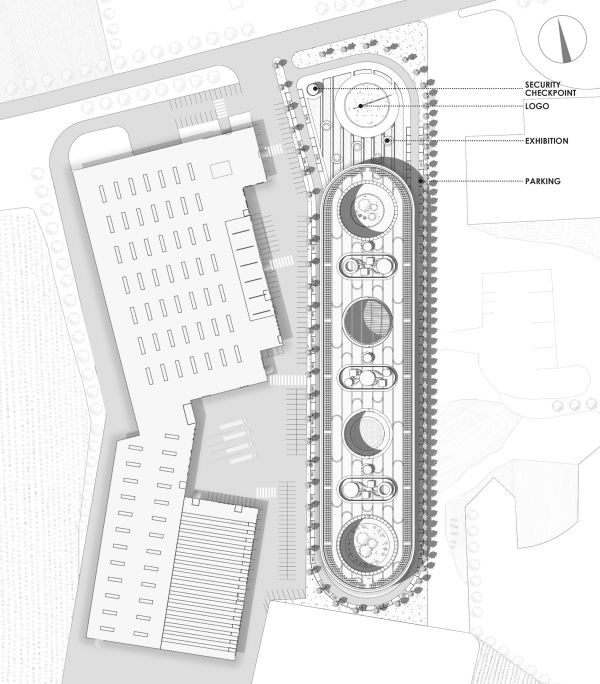 FITT headquartersCopyright: © ARENA Plan of the first and secind floors, FITT headquartersCopyright: © ARENASecond Place Varabyeu partners, Belarus FITT headquartersCopyright: Varabyeu partnersThe project was developed with regard to the influence of the coronavirus pandemic on commercial property. The architects tried as much as possible to adjust the building to today’s realities by creating an open-air coworking space and lounge zones. This will help to make a transition from the remote working format back to the office one, which will at the same time be safer. As for the shape making, the architects say they were inspired by circulation of water in the universe, and the arcades and patios that the project features are essentially a reference to the company’s homeland; they also help to zone out the space. At the same time, the “snake” of the plan looks like the FITT logo, while the “organ” of pipes above the main entrance unambiguously points to the company’s specialization. The complex includes a media showroom, a four-level parking garage, about 3,500 square meters of workspaces, half of which are isolated offices of a capsule type, an 650-seat arena, a 24-room guest block, laboratories, cafes, a gym, and a mini movie theater. The grounds also include a sports area with a football field, a concert venue, little inner yards for recreation after work, and more. The operated roof has open and semi-closed gazebos on it, elements of natural landscape, green islets, and a walking trail that connects all the functional parts of the complex, which is completed by a jogging track above the parking garage.  FITT headquartersCopyright: Varabyeu partners FITT headquartersCopyright: Varabyeu partners FITT headquartersCopyright: Varabyeu partners FITT headquartersCopyright: Varabyeu partners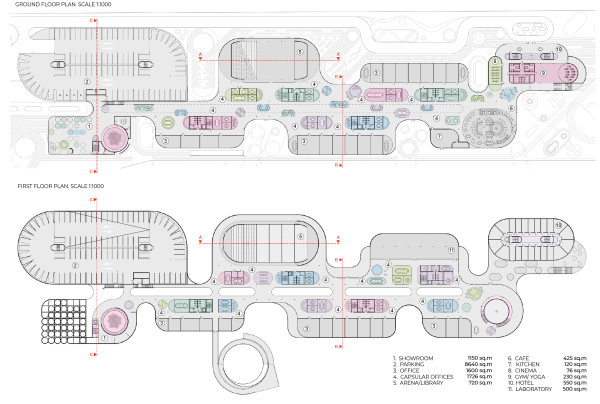 FITT headquartersCopyright: Varabyeu partners FITT headquartersCopyright: © Varabyeu Partners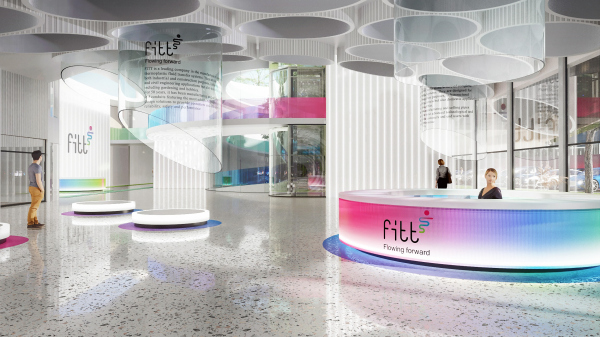 FITT headquartersCopyright: © Varabyeu PartnersThird Place Buffo Ercoli, Italy FITT headquartersCopyright: Buffo ErcoliThe architects endowed the building with a self-explanatory facade made of FITT pipes. The first floor predominantly includes public spaces (a restaurant, a museum, lounge areas, and open space laboratories). The second floor contains workspaces. This project features a green operated roof along the entire perimeter of the building – with a convenient access from all the public spaces.  FITT headquartersCopyright: Buffo Ercoli FITT headquartersCopyright: Buffo Ercoli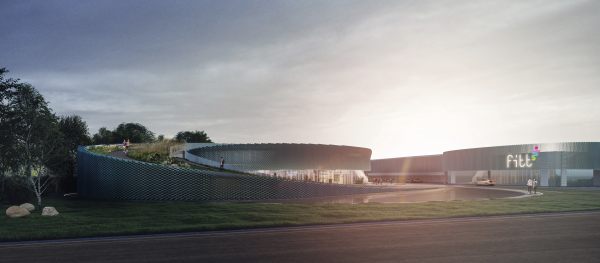 FITT headquartersCopyright: Buffo Ercoli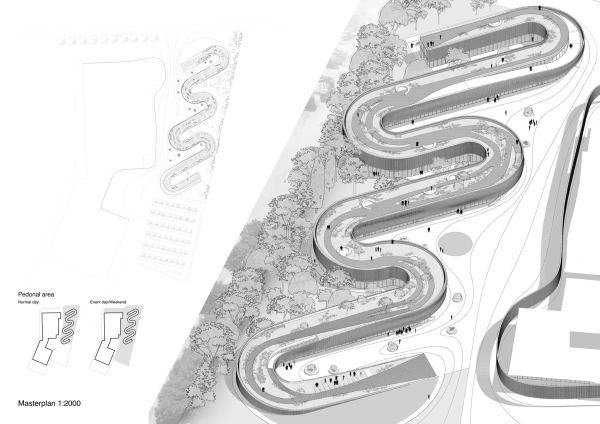 FITT headquartersCopyright: Buffo Ercoli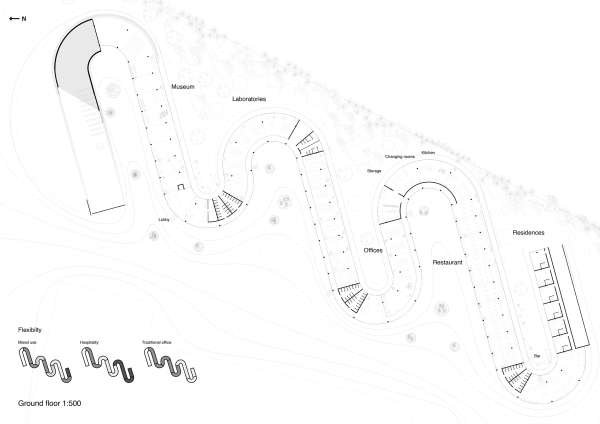 FITT headquartersCopyright: © ARENA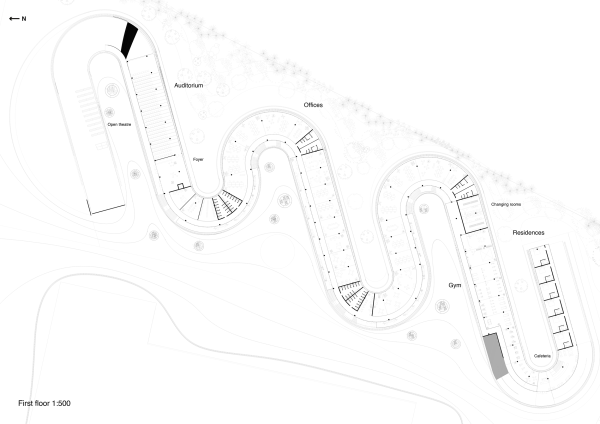 FITT headquartersCopyright: © ARENA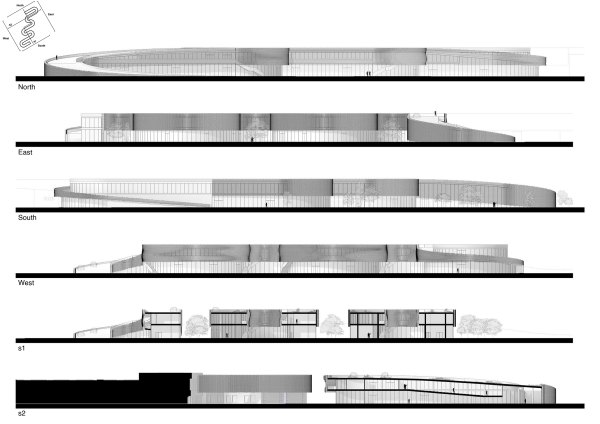 FITT headquartersCopyright: Buffo Ercoli*** You can learn more about the competition and see other shortlisted projects . |
|
